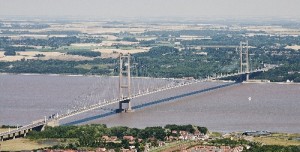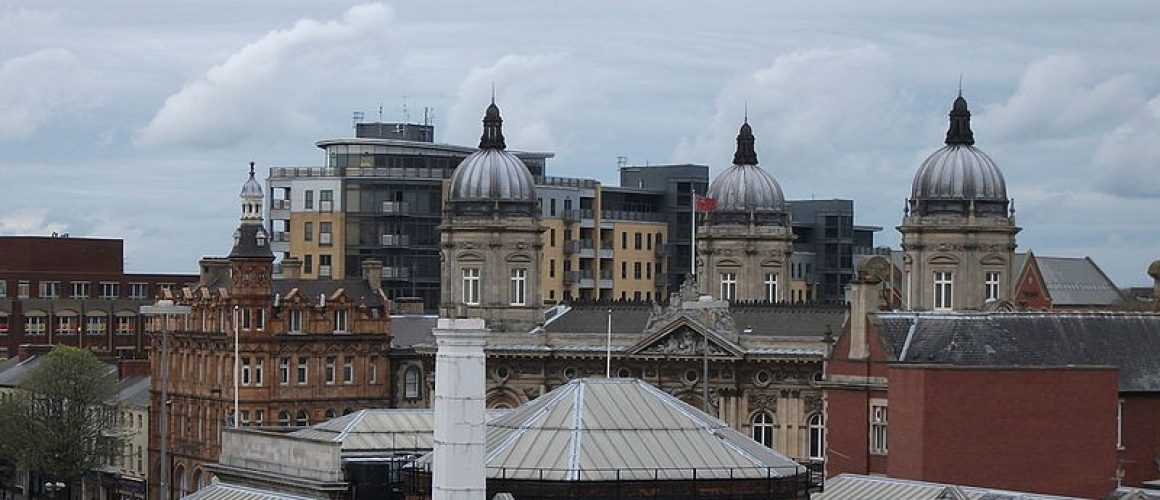A brief history of Hull
When I was asked to write an article about the history of my local area my initial thought was it was going to be a doddle. After all, I have lived in the Hull area all of my life. Then I began to think about the task seriously and I thought, “Aagh! Where do I start? I haven’t written an essay since I was studying for my degree at Hull Uni, back in the 70’s.”
“Do I write a list of dates and facts? No, I’m not writing a cure for insomnia! Do I write about the fishing industry and its decline? No, that’s a book that’s already been written. Do I write about Hull’s role in the Second World War? Do I write about all the famous people that have come from Hull? Do I write about recent historical events?”
“I know! I will write about them all!”
So here goes. Let’s start with a little of Hull’s early history.
Actually, Hull has a much more formal name. It really should be referred to as Kingston-upon-Hull as it has a royal charter bestowed upon it in 1299 by King Edward I. Because of its strategic position where the River Hull meets the River Humber, Hull flourished as a port, exporting lead and grain and importing goods from Holland, Sweden and Norway. Timber and oil seed continue to be major imports through the port of Hull to the present day.
During the English Civil War Hull’s strategic importance meant that it received the military attentions of both sides. In April 1642 King Charles I attempted to take control of the arsenal at Hull, but was turned away from the gates by the governor Sir John Hotham. Hull supported the Parliamentarian (Roundhead) side in the conflict, and was consequently besieged by the Royalists (Cavaliers) for five weeks in September and October 1643. side in the conflict, and was consequently besieged by the Royalists for five weeks in September and October 1643.

The port of Hull continued to thrive with new docks being built. Some have been filled in and replaced by the lovely Queens Gardens (which are overlooked by the new BBC studios) and the impressive Princes Quay Shopping Centre, the only ‘floating’ mall designed to look like an ocean-liner.
One of Hull’s famous sons was William Wlberforce (1759 -1833). As an MP, Wilberforce was a leading campaigner for the abolition of the slave trade. This was realised in 1807 with slavery as an institution being abolished in 1833. (Hull boasts an excellent museum in Wilberforce’s name. There is still an exhibit of a life-size model of Wilberforce in his study which always made me jump when I was a little girl).
The late 18th century saw the rise of the whaling trade in Hull. By 1800 40% of the country’s whalers sailed from the town, and the trade brought increased prosperity to Hull until it began to decline through over-fishing in the mid 19th century. (The Town Docks Museum is a brilliant place to visit with the family to learn more.)
By then, the fishing industry itself was beginning to take off in Hull. In the 1840s, the discovery of the “silver pits” – a very fish-rich part of the North Sea – led to fishermen from Devon and Kent migrating to the Humber, at first seasonally and then permanently. The introduction in the late 19th century of new fishing methods – the “trawl” – and of steam powered trawlers meant that Hull fishermen fished as far afield as Iceland and the White Sea. (Visitors to Hull can board my Dad’s favorite trawler, the Arctic Corsair, to sample a taste of the grueling work of fishermen).
The decline of the fishing industry had begun in the 1920’s due to over-production yet the same period saw the city’s housing improve with many council estates being built. These estates have been renovated in recent times and still provide homes for Hull citizens.
Also in the 20’s, my Alma Mater, Hull University, was founded. It is now one of the highest regarded universities in the United Kingdom with over 18,000 students a year. Philip Larkin (1922-85), one of the most

http://www.getting-in.com/
important English poets of the 20th century, served as Librarian from 1955 until his death in 1985. For the uninitiated, Larkin wrote that poem that says your parents f*** you up! (see This Be The Verse). He also wrote a poem which describes work as a toad and in 2010 individually decorated, fibre-glass Larkin Toads were placed around Hull City Centre. These were a huge success and won several tourist-awards. Some can still be seen in Hull (there is even one living in the garden of a house near me but I’m not telling you where as there is a challenge to find them all!).
During the Second World War Hull’s strategic importance saw it devastated by air raids, particularly in March and May 1941. The City was the heaviest bombed outside London and for security reasons was referred to, in news broadcasts, as a ‘north-east coastal town’.
The profile of trade in Hull changed after the War. The smaller, older docks were closed, but Queen Elizabeth Dock opened in 1969 to handle container traffic. The port continues to thrive with some of the largest super-ferries in the world operating from Hull. (An interesting walk that my family and I enjoy starts at The Deep (the world’s only submarium housing sharks, rays and shortly Gentoo penguins), along the footpaths on the banks of the Humber and on to the P&O North Sea Ferries terminal.).
Despite the final collapse of the fishing industry in the 1970’s due to the ‘Cod Wars’, some important firms like Reckitt Benckiser and Smith & Nephew are still in Hull and timber (which can be seen on the walk I mentioned) is still imported after over 700 years.
In 1973 work began on the Humber Bridge, one of the longest single-span suspension bridges in the world. It was opened by the Queen in July 1981. It offers superb views of the Humber Estuary and, I think, is more impressive than the Golden Gate Bridge in San Francisco.
Hull also has sporting credentials which I have to admit is not an area of interest of mine! Despite this, I am kept appraised of Hull sport by my 92 year old father. I am given to understand that Hull City AFC (the ‘Tigers’) are in the Premier League for the second time this century although whether they stay there remains to be seen! Another friend (from Lancashire – shock, horror!) is an ardent supporter of Hull FC (the ‘Black and Whites’ or ‘Airlie Birds) which is a Rugby League club in the west of the city. East of the city is the rugby team of Hull Kingston Rovers (the Red and Whites’ or Robins). The rivalry between the two teams seems to be fairly friendly.
The greatest news in the very recent past is that Hull has been named as City of Culture 2017 beating off Leicester, where my husband was born and Dundee, where my daughter works. Yesss!!
Hull is often portrayed as being ‘at the end of the line’ thanks to the Beeching railway cuts of the 1960’s and that no-one ever passes through Hull on the way to other places. If this is true, then it is, in my opinion, a good thing for Hull is a ‘hidden jewel’ in Yorkshire’s crown. Once a person has lived in Hull it is very hard to leave – witness my husband who came to study here in the 70’s and now considers himself to be a naturalized Yorkshireman and a champion of all things Hull!
Well, did I cover everything I set out to do? Probably not, for there are far more famous people to mention and I don’t know if you are still awake!!
Ref: http://www.hullhistorycentre.org.uk
Written By Joanne Stanley

